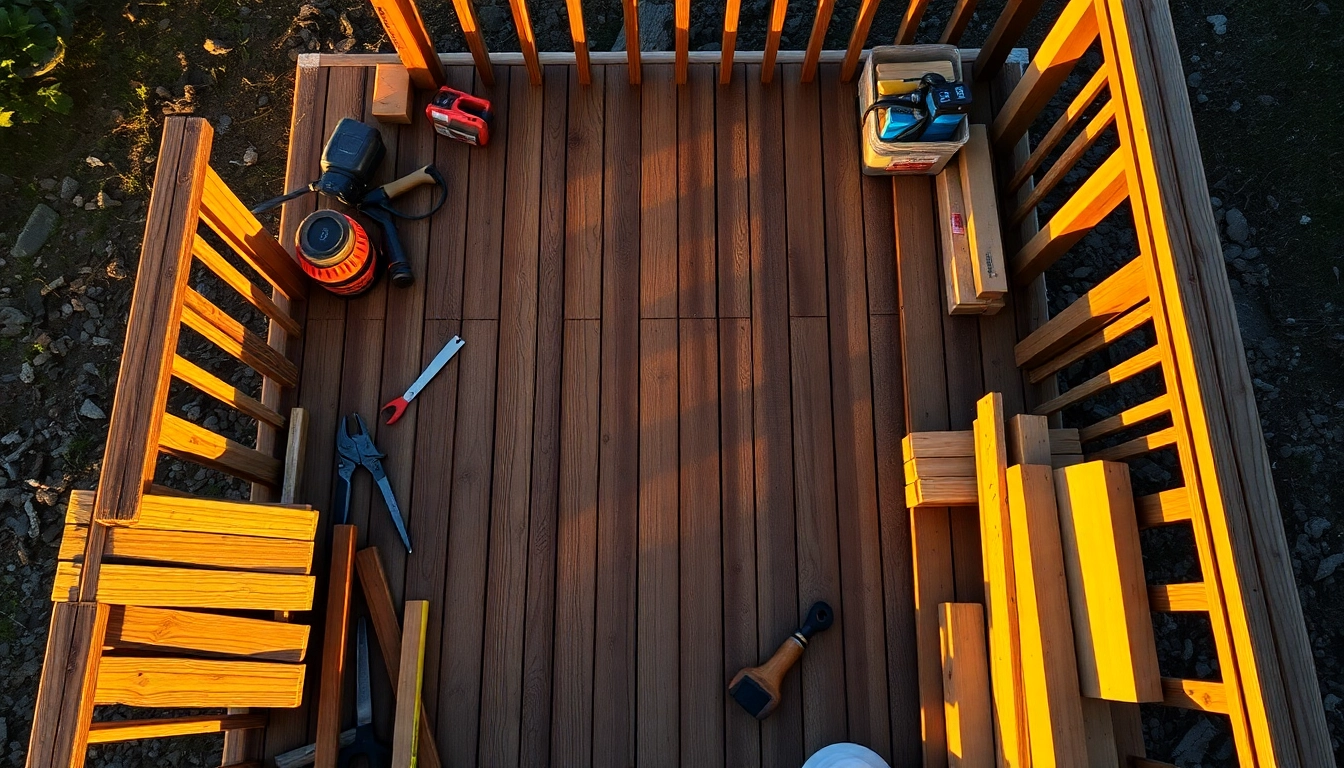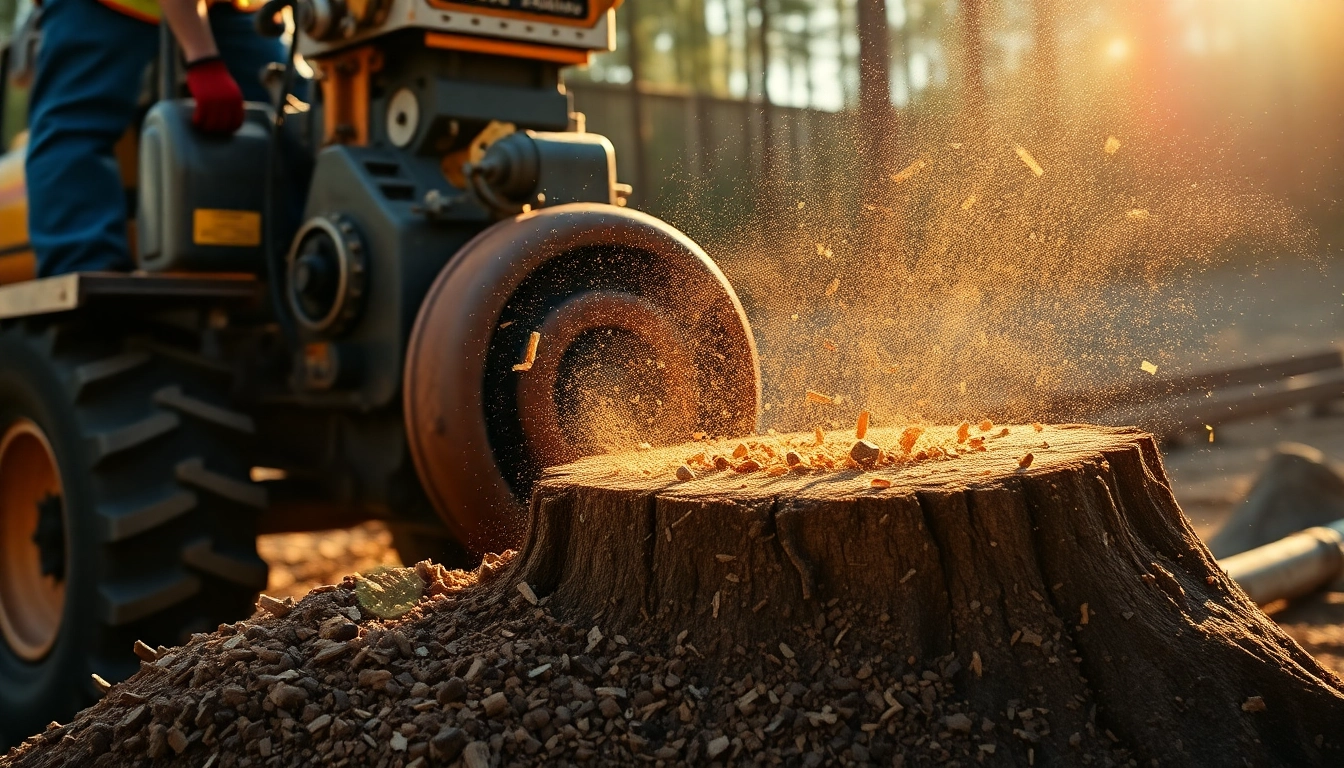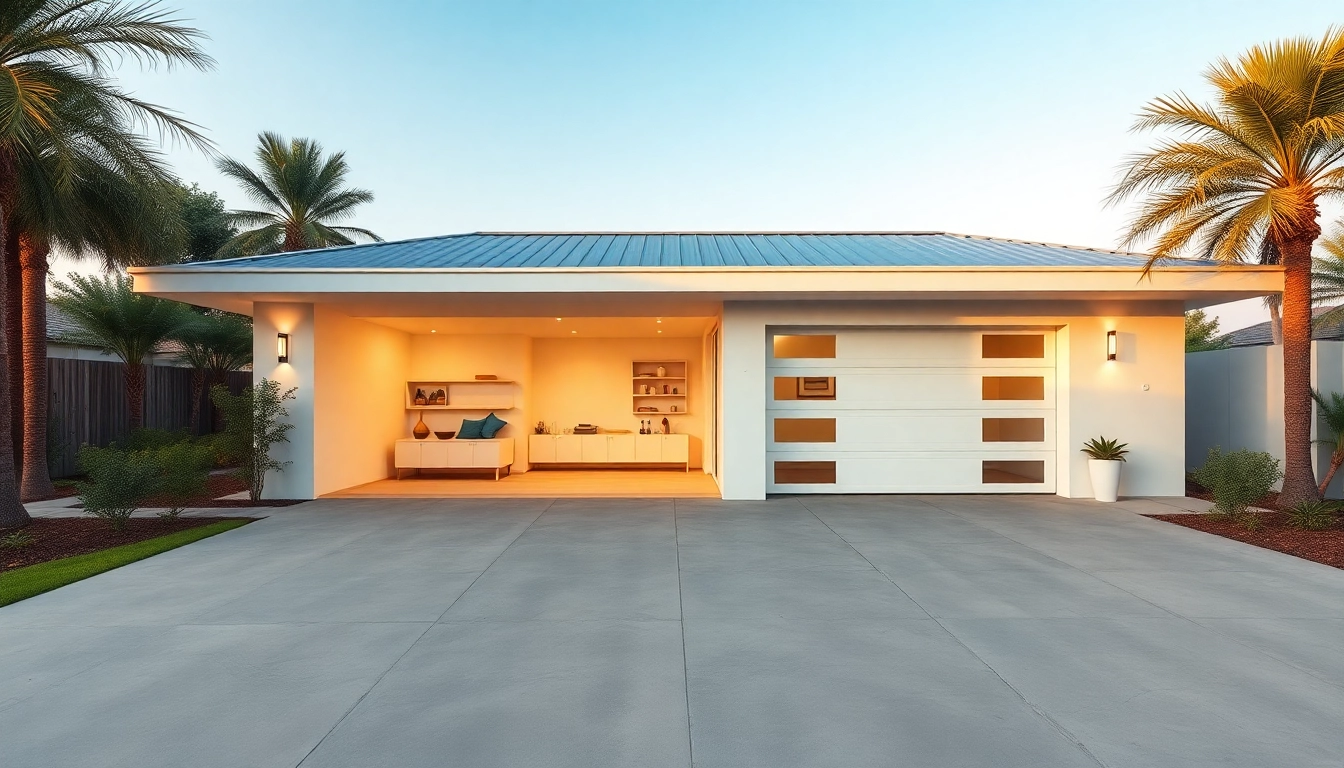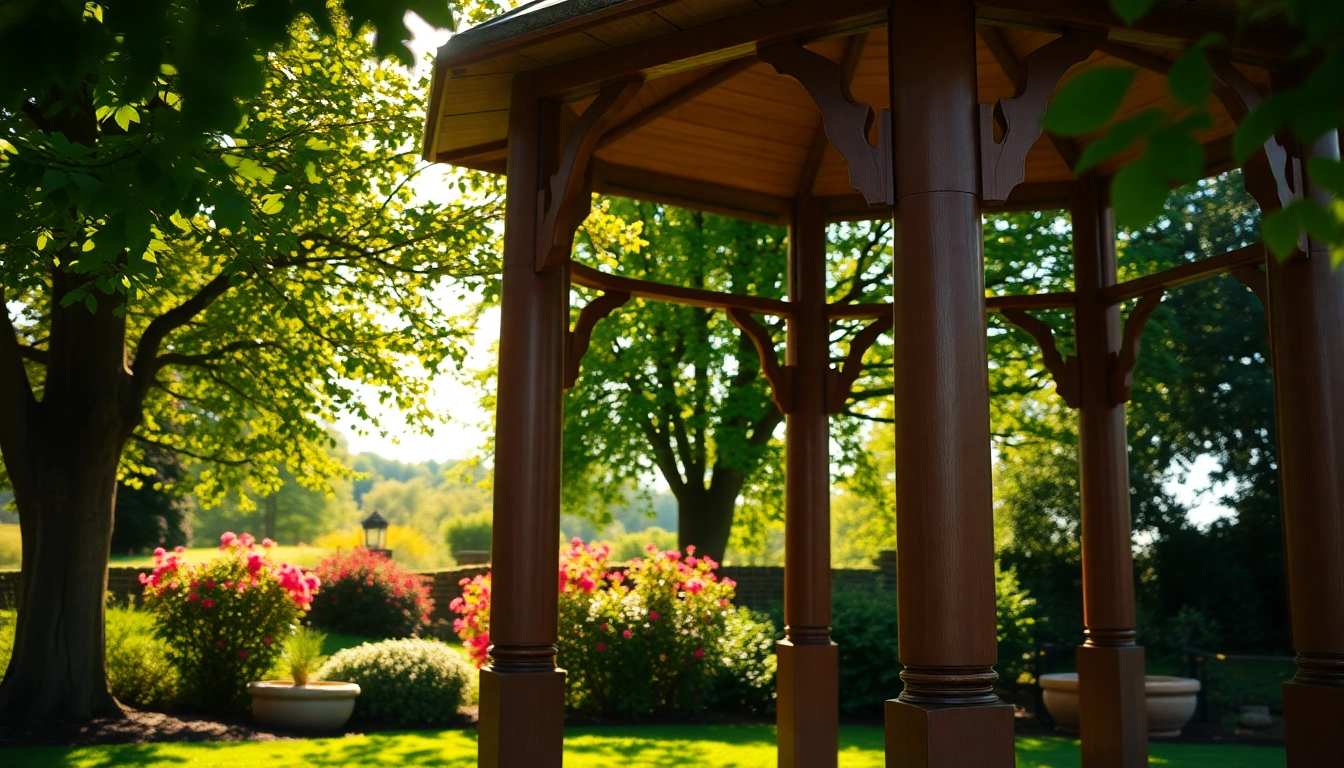Understanding Deck Construction Basics
What is Deck Construction?
Deck construction is a vital aspect of residential and commercial architecture, allowing homeowners and businesses alike to create functional outdoor spaces. It involves the process of planning, designing, and building a deck that is not only aesthetically pleasing but also safe and structurally sound. At its core, deck construction encompasses everything from initial design concepts to the selection of materials, following local building codes and regulations to ensure compliance.
This article serves as a comprehensive guide on deck construction. Whether you are looking to build your dream deck or simply want to learn more about the process, this guide is designed to provide valuable insights and practical tips.
Types of Decks and Their Uses
Decks come in various forms, each serving specific purposes and catering to different needs. Here are the common types of decks you will encounter:
- Patio Decks: Typically built at ground level, patio decks provide a seamless transition from indoor spaces to outdoor areas, ideal for entertaining guests or relaxing outdoors.
- Raised Decks: These decks are elevated above ground level, requiring additional support structures. They are great for homes with sloped yards or for adding visual interest.
- Multi-Tier Decks: Multi-tier decks incorporate varying levels and styles, creating dynamic outdoor spaces and providing distinct areas for activities.
- Wrap-Around Decks: These decks extend around one or more sides of a home, offering panoramic views and multiple access points.
- Roof Decks: Constructed on a flat roof, these decks maximize urban outdoor space, creating a unique escape above the ground.
Materials Used in Deck Construction
The selection of materials is crucial for deck construction, impacting the deck’s durability, appearance, and maintenance requirements. Common materials include:
- Wood: Traditional and popular, wood decks offer natural beauty. Common types include pressure-treated cedar and redwood; however, they require regular maintenance.
- Composite Decking: Made from a blend of wood fibers and plastic, composite materials are low maintenance and resistant to decay. They come in various colors and styles, simulating the look of real wood.
- PVC Decking: A type of plastic decking that is highly durable and easy to clean. It is resistant to moisture and mold, making it a great option for wet climates.
- Aluminum Decking: Lightweight and resistant to corrosion, aluminum decking can withstand harsh weather conditions and requires minimal upkeep. It’s a more modern choice for innovative designs.
Planning Your Deck Construction Project
Budgeting for Your Deck Construction
Your budget is a pivotal element in any deck construction project. The total cost can vary significantly based on factors like size, material selection, labor, and additional features. Planning a budget involves:
- Defining your desired deck size and style
- Researching the cost of materials and labor in your area
- Including potential permits and inspections fees
- Allowing for unexpected expenses, usually 10-15% of your total budget
The average cost of deck installation focuses on project size; for instance, a 14’x20’ deck may range between $11,200 to $16,800 nationwide.
Choosing the Right Location
Determining the location for your deck is reliant on several factors. Ideally, the deck should connect effortlessly with your home and take advantage of scenic views. Keep in mind:
- Sunlight: Consider the sun’s trajectory for optimal shade or sunlight exposure
- Privacy: Position your deck to maximize privacy from neighbors
- Access: Ensure there is easy access from inside your home
- Ground Conditions: Sandy soil is preferred for a solid base versus clay or rocky soil
Design and Layout Considerations
Designing your deck is an exciting part of the planning process. Factors to consider include:
- Purpose: Will the deck be primarily for entertaining, relaxation, or both?
- Shape: Common options include rectangular, L-shaped, or circular designs that complement your home’s architecture.
- Features: Consider including built-in seating, planters, or fire pits to enhance functionality and aesthetics.
Tools and Techniques for Successful Deck Construction
Must-Have Tools for Deck Construction
Having the right tools at your disposal is essential for efficient and effective deck construction. Below is a list of must-have tools:
- Measuring Tape: For precise measurements of materials and layout.
- Level: Ensures that your deck is built evenly and doesn’t slope unnecessarily.
- Post Hole Digger: A specialized tool for digging deep, narrow holes for deck posts.
- Drill: Essential for creating pilot holes and securing deck boards.
- Saw: Both power and manual saws will be necessary for cutting lumber to size.
- Safety Gear: Hard hats, gloves, and eye protection to keep you safe while working.
Common Construction Techniques
The construction techniques used can significantly affect the appearance and durability of your deck. Key methods include:
- Framing: Proper framing is the backbone of your deck. It involves creating connections between joists, beams, and support posts, following best practices to maintain structural integrity.
- Joist Spacing: Adhering to proper joist spacing (typically 16” on center) ensures that your decking can withstand weight without sagging.
- Fastening: Selecting the right type of screws and fasteners is crucial for stability and longevity. Corrosion-resistant options are recommended.
Safety Measures During Deck Construction
Your safety and the safety of those around you should never be compromised. Follow these safety measures:
- Always wear personal protective equipment (PPE) such as gloves, goggles, and hard hats.
- Ensure your work area is clear of any hazards, and keep tools organized.
- Make sure ladders and scaffolding are stable and secure before climbing.
- Know the load limits of your deck to prevent accidents during construction.
Step-by-Step Deck Construction Process
Preparing the Ground and Setting Footings
Proper groundwork is vital for a sturdy deck. Here’s a breakdown of the steps involved:
- Check local zoning laws and building codes for necessary permits.
- Clear the proposed deck area of any debris, vegetation, or obstacles.
- Mark the outline of your deck using stakes and string to visualize the layout.
- Use a post hole digger to create holes where support posts will be situated, ensuring they are deep enough to prevent frost heave.
- Pour concrete footings for each post, allowing sufficient time to cure before proceeding.
Constructing the Frame
Once the footings are in place, constructing the frame is the next essential step:
- Install the ledgers on the exterior wall of the house, ensuring they’re level and securely fastened.
- Attach the support posts to the footings, making sure they are plumb.
- Create the frame by installing beams that connect to the posts, offering support for the decking.
- Secure joists to the beams at even intervals, ensuring proper spacing and leveling.
Installing Decking and Finishing Touches
The final phase involves putting in the decking material and any additional features:
- Install the decking boards perpendicular to the joists, starting from one end and moving to the other.
- Leave gaps between boards to allow for expansion and drainage.
- Consider adding features like railings, stairs, or decorative elements as finishing touches.
- Inspect your work, making sure everything is secure and safe for use.
Maintaining Your Deck Post-Construction
Regular Maintenance Tips
Maintaining your deck is essential for longevity and safety. Regular maintenance tips include:
- Clean your deck regularly, removing dirt, leaves, and debris that can foster moisture and mold growth.
- Inspect for loose boards or screws and repair them promptly.
- Apply sealant or stain to wood decks every few years to protect against weather and wear.
Repairing Common Deck Issues
Common issues that may arise with your deck can include:
- Sagging Boards: Check and reinforce joists if boards sag over time, ensuring they receive necessary support.
- Rotting Wood: Replace any damaged or rotting boards immediately to prevent safety hazards.
- Loose Railings: Regularly inspect railings and repair any loose connections to prevent accidents.
Enhancing Longevity with Quality Materials
Selecting quality materials from the start leads to fewer repairs and longer-lasting satisfaction. Consider the following:
- Research reputable brands and materials that guarantee durability against local weather conditions.
- Invest in treated wood or composite materials engineered for longevity.
- Consult experts or hire professionals when in doubt, ensuring a quality installation.



